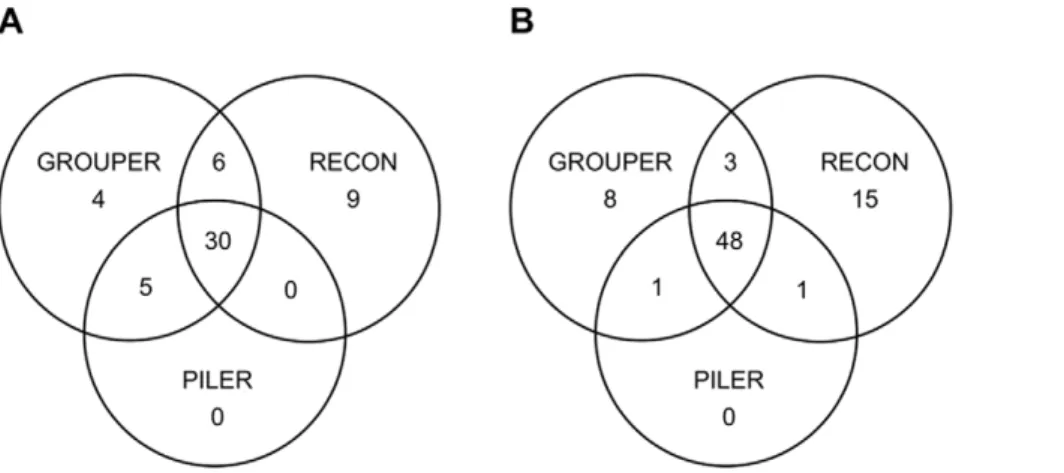Considering transposable element diversification in de novo annotation approaches
Texte intégral
Figure


Documents relatifs
In this paper, we present a human detection system in which the search space of the classifier is reduced calculat- ing background subtraction with a single Gaussian model for
The authors used a network consisting of a word embedding layer using the Glove method (which allows for each word in the text data to obtain a corresponding fixed-length vector
The structure and main contributions of this paper are: (1) a detailed presentation of an intermediate, tool-agnostic metamodel that can be used to represent multilevel
Using only the quality to choose OTUs increases this number as the “best” OTUs attract all the sequences in their fuzzy surroundings.. This causes some sequences be- longing
The second set of annotators runs more complex analyses (e.g., semantic role labeling) for extracting the predicate structure of the sentences and for mapping these predicates to
To summarize our contributions, we introduce a novel al- ternative to the sample correlation matrix and present a first use of it to discover structure appropriate for general FDI
We use this new approach, called TASR (for Transposon Annotation using Small RNAs), for de novo annotation of TEs in Arabidopsis , rice and soybean and demonstrate that this
In both Cu/Zn and Cu only SODs, an aspartate ligand orients the histidine residue that is bound only in the Cu(II) form and loss of this residue results in a decrease in